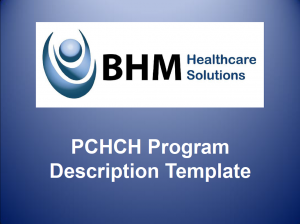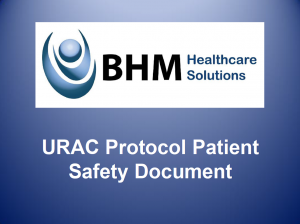 A Four Step Guide to Creating Perfect Accreditation Policies and Procedures
A Four Step Guide to Creating Perfect Accreditation Policies and Procedures
For a long time BHM has been assisting organizations in navigating through the accreditation process.
- Step 1: Make the Most of Your Formatting
- Bonus Tip: If somewhere in the body of the accreditation Policy and Procedure, you have a statement indicating that effective dates will be the same as the approval date, you won’t need to include an effective date in the header
- Step Two: Determine how you will go about initial development first, and document it!
- Step Three: Successfully Addressing Reviews and Approvals
- Bonus Tip: “Use strategy in writing your policies and procedures!”
- Step Four: Address These Additional Items that Could Save You Time and Keep You in Compliance
- Bonus Tip: Do not include multiple accreditation policies and procedures that address the same content. This will help you to avoid having multiple policies and procedures to revise when something changes.
- Sample Policies and Procedures:
 A Four Step Guide to Creating Perfect Accreditation Policies and Procedures
A Four Step Guide to Creating Perfect Accreditation Policies and Procedures
For a long time BHM has been assisting organizations in navigating through the accreditation process. When our clients seek our counsel, over and over again we are asked about the development of accreditation policies & procedures, and this is frequently an area in which people need the most assistance, so I thought that I would go straight to the source, Rachel Boggs, our internal accreditation expert and pick her brain regarding what makes a winning accreditation policy and procedure, and what her top recommendations were, and I am glad that I did. I am pleased to share with you some of Rachel’s top secret tips to creating what she calls “Purrrr-fect P&Ps.” Let’s begin!
Step 1: Make the Most of Your Formatting
Formatting may seem like a simple task, but as with all things there is a right way and a wrong way to format a Policy & Procedure. The wrong way will result in an unstandardized document that is not easy for Accrediting reviewers to navigate. The right way will result in clean, consistent standardized Policies & Procedures which are not only easy to navigate, but which create the perfect base for organization, presentation, and updates. Here is Rachel’s advice:
- Always use a consistent template for all policies and procedures, including consistent organization style/outline format, font, etc.
- Decide ahead of time if you will have a section on definitions or if you will have a master list of approved definition
- Include a “space” for documenting standards or regulations met in the policy and procedure. Rachel says “I like to put these at the very end of the document in a small table”
- Include a header that at minimum captures the following components
- Title
- Date of initial approval
- Dates of all subsequent approvals (we will go into this in more detail further down)
- Name of Department that “owns” the Policy and Procedure
- Recognize that numbering is optional – numbering conventions are common in the P&P world; however Rachel does not recommend them unless you have more than 50 Policies and Procedures. Numbered accreditation policies and procedures can create confusion down the line if you combine, amend, or retire policies.
- When saving your accreditation policies & procedures, keep the file name as close to the actual title of the P&P as possible. This will help you stay digitally organized as well as locate important files when it is time to show them during onsite visits, surveys, or mock audits.
Bonus Tip: If somewhere in the body of the accreditation Policy and Procedure, you have a statement indicating that effective dates will be the same as the approval date, you won’t need to include an effective date in the header
Step Two: Determine how you will go about initial development first, and document it!
- Create a section that clarifies how accreditation policies and procedures are developed within your organization, and according to Rachel “save the discussion about revisions, annual reviews, etc. for a separate section.”Take the development process from birth to approval and include the following components:
- The titles of all personnel positions who participated in the review
- The Quality Committee(s) that make the final approval – these are critical elements during accreditation reviews
Step Three: Successfully Addressing Reviews and Approvals
Generally, you need to review all policies and procedures at least annually. State this in your Policy and Procedure in a way that makes it clear that it is one time per year. This will enable you to change the date from which you measure from the most recent review/approval to the next review/approval date (12 months later). Otherwise, you will be committed to a process called an “annual review” at a certain time of the year, even if an accreditation policy and procedure was only recently reviewed, revised, or approved to support a change. If such an interim review occurred, then you won’t be due for a review again for another 12 months if the policy on reviews is written appropriately.
Bonus Tip: “Use strategy in writing your policies and procedures!”
Step Four: Address These Additional Items that Could Save You Time and Keep You in Compliance
- Ensure that the Senior Clinical Staff person is included in the review and approval process, even if only to sit on the committee that does the formal approval.
- Rachel states “I have found it helpful to include a statement that when revisions occur that are not substantial, such as correction of types, grammar, word choice, etc., the Policy and Procedure does not have to go through the formal approval process again.”
Bonus Tip: Do not include multiple accreditation policies and procedures that address the same content. This will help you to avoid having multiple policies and procedures to revise when something changes.
Sample Policies and Procedures:
- To round out this blog here are some resources including a sample Policy and Procedure which you can find by clicking on the picture below.
To learn more about this topic and many others, download our Free Accreditation Success White Paper here, a comprehensive guide to get you started on the road to Accreditation Success!
The post A Four Step Guide to Creating Perfect Accreditation Policies and Procedures appeared first on BHM Healthcare Solutions.


 A Four Step Guide to Creating Perfect Accreditation Policies and Procedures
A Four Step Guide to Creating Perfect Accreditation Policies and Procedures






